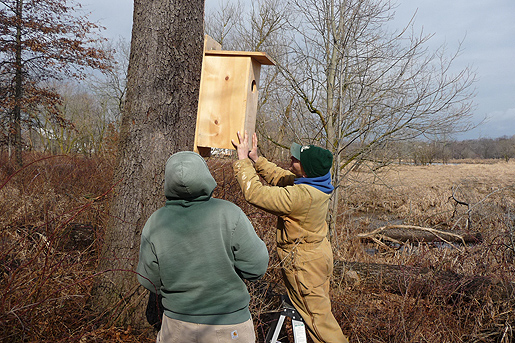Neshanic Valley Making A Difference
 |
Neshanic Valley was certified last year as an Audubon Cooperative Sanctuary. (Courtesy Neshanic Valley) |
By David Shefter, USGA
Neshanic Station, N.J. – The environmental reminders at Neshanic Valley Golf Course are omnipresent.
They begin the moment you enter the 420-acre, 27-hole facility in central New Jersey.
There are plaques in both the pro shop and maintenance area, as well as notations on the scorecard and posted signs on the golf course, which also includes a nine-hole short course and expansive learning center with a 16,000-square-foot putting green.
Certified in 2009 as an Audubon Cooperative Sanctuary, Neshanic Valley is one of only two courses in the Garden State to be cited as River Friendly by the New Jersey Water Supply Authority. And the past two years, the course has been formally recognized for Environmental Stewardship by the New Jersey Department of Environmental Protection.
“It’s great,” said Andrew Hojnowski, Neshanic Valley’s manager of golf course maintenance. “Any kind of good publicity we can get is good, especially being a county operation. We’re always under fire. We’re always in the spotlight. Golf courses in general are under fire.”
That’s why every maintenance practice at Neshanic Valley – from watering to planting trees – is executed with the environment in mind. During course construction, four buffers were created so that water runoff didn’t affect habitat in the nearby Raritan River.
Native fescue and environmentally sensitive areas encompass a little more than a third of the property. Signs posted throughout the course prevent golfers from entering environmentally sensitive areas (ESA), while carts are forbidden from the non-irrigated fescue areas, which by the middle of the season add a golden touch to the meadowland-style layout.
“Anywhere we don’t have to [water], we don’t,” said Hojnowski. “We have a limitation on how much we can use each year, but our goal is to use as little as possible.
“Just because they say you can use 50 million gallons doesn’t mean we do. Last year, we only used 20-something. We’ll average around 40 million [gallons].”
The 30-year-old Hojnowski, who has been at the facility for three years, has spent half his life working at golf courses. His second job came 15 years ago at Cape May National on the New Jersey shore and he’s loved golf course maintenance ever since.
But at Somerset County-run Neshanic Valley, which opened in 2005, Hojnowski has to carefully balance management programs that not only protect the environment but also keep the course in proper condition. Strict Environmental Protection Agency guidelines must be followed. The county dictates the amount of annual water he can use and Hojnowski monitors the situation on a daily basis through the use of a computer weather station and common sense.
He’s not afraid to let the course get a little brown, so long as the bentgrass doesn’t go completely dormant. All tees, fairways, roughs and greens feature bentgrass, while the short course is bluegrass, except for the greens.
“The drier the better,” said Hojnowski of the course, which hosted sectional qualifying in 2009 for the U.S. Women’s Open and U.S. Amateur Public Links and will be a sectional qualifying site in June for the U.S. Women’s Amateur Public Links. “I like to let it … play hard and fast. As you can see, this course is wide open. It dries out super fast.”
The “Go Green” philosophy goes far beyond golf course maintenance. Something as simple as more efficient light bulbs are used to save energy.
Neshanic also prides itself on being a wildlife sanctuary. Bluebird boxes can be spotted throughout the venue. It’s not uncommon to see deer or fox strolling the fairways or see a swallow or purple martin soaring above the rolling topography. All the holding ponds have been stocked with bass and grass carp, but fishing is prohibited.
Park rangers have also assisted prospective Eagle Scouts with wildlife projects at the facility. One individual built 15 bluebird boxes last year. Two years ago, another person constructed wood duck boxes and placed them all along the river. There are also five purple martin boxes and bat houses that the staff created.
“We do as much as we can to enhance the wildlife habitat around here,” said Hojnowski. “We monitor all of the nests each year.”
While some see golf courses as environmentally unfriendly, Hojnowski and other agronomists understand that’s simply not the case. While driving around the course with a visitor, Hojnowski had to quietly admonish a player for entering an environmentally sensitive area during a ball search.
“It happens all the time,” he said. “Our rangers do a good job of policing it. Nobody is allowed in there, not even our staff.”
Audubon International has praised the course for its reduction of chemical usage, water quality management, outreach and education and environmental planning.
“In my mind, a golf course is one of the best things for the environment," said Hojnowski. "It’s just a lack of education. Most people don’t realize what we do. We are out here to protect the environment.”
David Shefter is a staff writer in the Communications Department. E-mail him with questions or comments at dshefter@usga.org.
